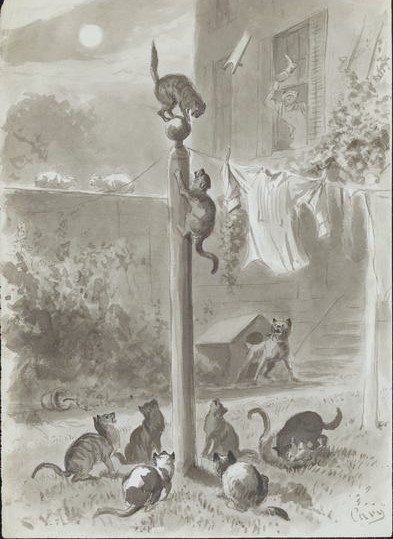
The following story features a wealthy miser who lived frugally despite her wealth, about a dozen cats that lived with her in a dingy apartment, an ottoman stuffed with cash, and a few cows that made the Goelet family one of the richest landowners in midtown Manhattan in the 19th and early 20th centuries. Trust me, it all fits together in an odd historical way.
The Wealthy Cat Lady
Maria E.D. Mang moved to America from Austria in 1848, when she about 17. She met and married William Kull, who was a director for the former Bull’s Head Bank on Third Avenue and 25th Street. The couple lived in a fashionable apartment on West 23rd Street and attended many formal affairs. They never had children.
After her husband died in 1863, Maria Kull began collecting cats. Never having had any experience dealing with money, bonds, or real estate before–and trusting no one, including her own family members–she also began hoarding and hiding her cash and securities. She reportedly collected about $5000 in dividends every year following William Kull’s death.
Sometime around 1875, Maria moved into one of the two tenement buildings her husband had owned (and were now in her name). Although the five-story building at 829 First Avenue (where the UN complex now stands) was a bit nicer, she chose the four-story brick tenement closer to midtown Manhattan at 743 Third Avenue. Although she was now the owner of both buildings, she decided to live in only two squalid rooms on the second floor.
Little by little, the woman known in the neighborhood as Grannie Kull turned into a miser, convinced that everyone was trying to steal her money. She began wearing shabby clothes and telling people that all her money was gone, and doing her own handy-man work in the building (such as carpentry and replacing windows) in order to save money.
Maria Kull also started taking in boarders, including an older man of questionable reputation named Herman Weller (aka Weber) who may or may have not been her lover.
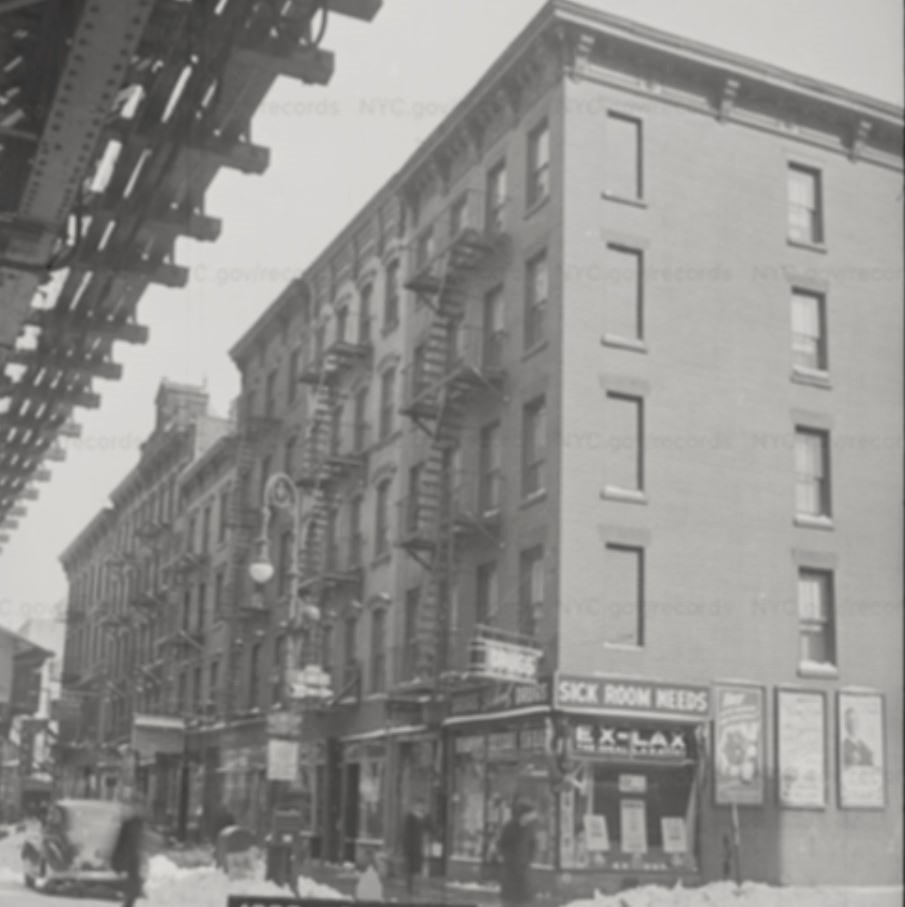
Although Maria limited her own diet to cheese and crackers, several times a week she would gather up some coins and hobble with her cane to the butcher, where she’d purchase a quarter pound of chuck steak for her cats. Although the cats spent much of their time inside the tiny apartment, they would often go up on the roof or have fights in the backyard. Maria owned the building, so there was nothing the other tenants could say about the cat situation.
Other than a niece, Susan Mang, who traveled from the Bronx to midtown to visit Maria about once a month, other neighbors were never invited to visit. They would bring her food, thinking she was starving, but Maria was a miser and wanted nothing to do with other people.
One day in February 1905, Maria was brutally attacked (the police thought Herman may have beat her, but Maria insisted that two men who were trying to rob her attacked her as she fought them off). The ambulance took her to Flower Free Surgical Hospital, a large facility located along the East River at 63rd Street.
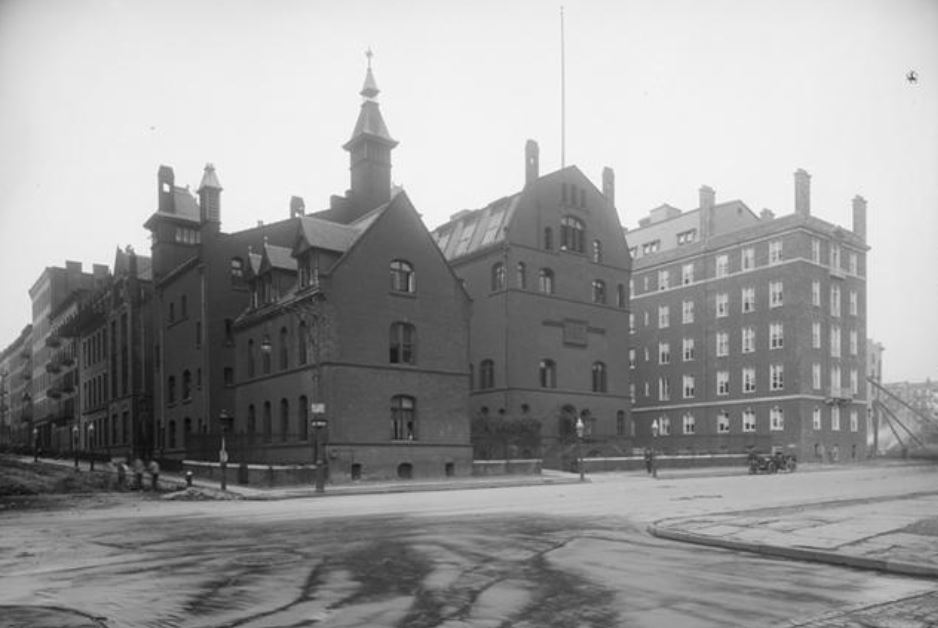
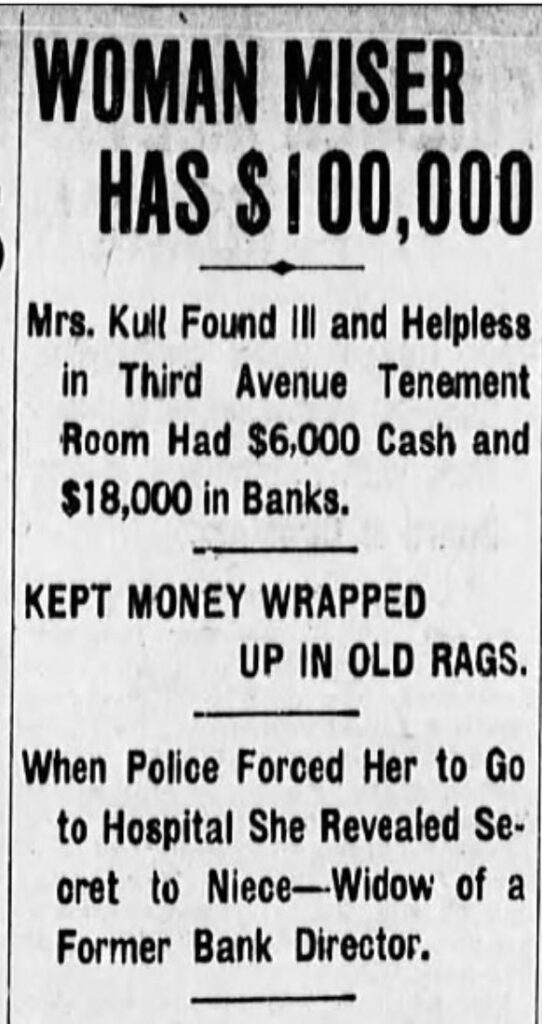
When the police arrived with the ambulance, Maria asked them to bring a dirty old ottoman to the hospital, as it was the only furniture she said she could sleep on. They of course could not comply with her wishes, so instead, the police and her niece inspected the ottoman.
Stuffed inside they found bunches of $50 bills tied up in rags–a total of about $3000. They also found another $3000 in cash and about $20,000 in securities in the cupboards, plus the deeds to the two buildings.
All total, as the press noted, the woman miser was worth about $100.000.
When Maria returned home from the hospital–where she had also been diagnosed with chronic gastritis due to her poor diet–she found that the Board of Health had removed much of the furniture in her apartment. She continued living there until her death in August.
On the day Maria’s body was found in her apartment, the neighbors had alerted police to all the howls coming from the cats trapped inside. Police broke down the door and found Maria on an old couch, surrounded by her cats. The cats began swarming around the police officers, hoping for a few morsels of food.
Susan Mang and one of Maria’s nephews, Carl Hein, reportedly inherited the estate. Ms. Mang had promised her aunt that she would find homes for the cats before the woman had passed away.
A Brief History of Third Avenue in Midtown Manhattan
So where do the cows and the families of Robert Goelet and Peter Goelet come in, you ask? In the history of the land, of course!
The land on which Maria Kull’s tenement at 743 Third Avenue was constructed in the 1800s was once part of a large, 55-acre farm owned by Thomas Buchanan. Buchanan, born in Glasgow on December 24, 1744, was a descendent of prosperous Scotch merchants. His parents were George and Jean (Lowden) Buchanan.
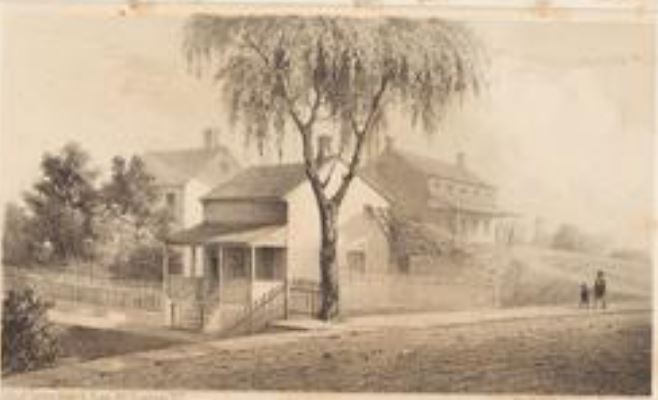
In 1763, following his studies at the University of Glasgow, Buchanan went to New York, where he entered into partnership with his father’s cousin Walter, who was already established in a shipping business in lower Manhattan. The firm of W. & T. Buchanan owned several ships and did extensive trade with the British ports.
Thomas married Almy Townsend, and the couple had numerous children, including a daughter who married Peter Goelet and another daughter who married Peter’s brother, Robert Ratzer Goulet (who, by the way, owned a country estate that is now a wonderful restaurant and B&B called Glenmere Mansion near my hometown).
Mrs. Townsend had a penchant for fresh milk and butter. Therefore, she insisted on having her own cows. She first asked her husband to purchase land near Canal Street (the family had a mansion on Wall Street), but when she realized that wasn’t big enough for for a herd of cows, she convinced him to buy some land along Fifth Avenue in the more remote part of Manhattan.
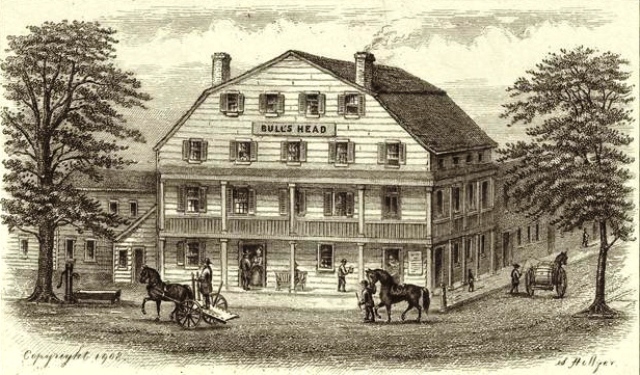
And so between 1803 and 1807, Thomas Buchanan purchased 55 acres of common land, which the city was disposing, for the sum of $7,537. The plot was bounded by Fifth and Third Avenues between 45th and 48th Streets. In addition to the cows, Thomas planted turnips, corn, and potatoes on the land.
Thomas Buchanan died on November 10, 1815. At that time, his estate, which also included a country seat on the East River between 54th and 57th Streets, was valued at $50,000.
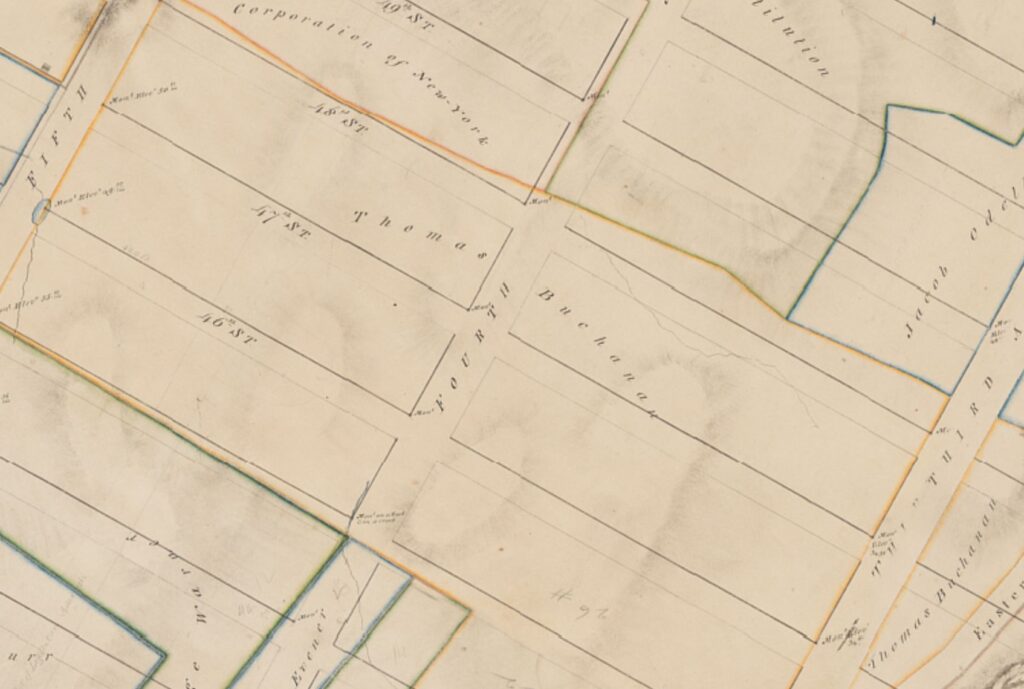
In 1902, Thomas and Almy’s descendants, including members of the Goulet family, still owned this land. At this time, this large parcel in midtown Manhattan was valued at $30 million. I’m sure the Goulets were happy that Almy Buchanan had wanted enough land for a herd of cows!




I had no idea that my grandmother lived on a farm – in a building at Third Ave and 48th St – in the 1950s and ’60s.
Thanks for all the great research!
I’m glad you enjoyed the story! I love when people learn unique facts about their ancestors on my site.